Guest blog – Walshaw Turbine 18 by Ali West – Mark Avery
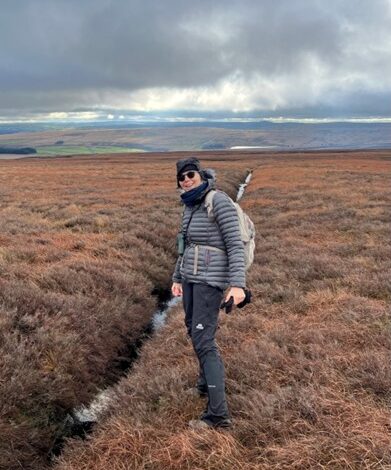
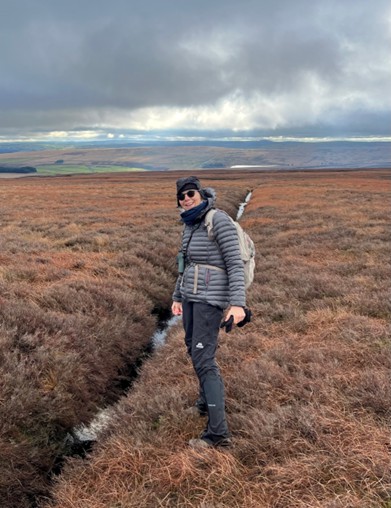
Ali West has lived in the Hebden Bridge area for more than 40 years and has walked extensively in the surrounding hills over all of that time, including on Walshaw Moor, a favourite spot. She has a science degree and has been self-employed for all her working life. Since her early 20s she has also been a performing musician, including singing with and directing a local chamber choir. Her latest composition, for voices, cello and alto recorder, is a paean to Walshaw Moor, and will be premiered by the female vocal ensemble Alyssium early in 2026.
Turbine 18 Greave Pasture SD 95094 33237 ///pelt.snares.stoppage
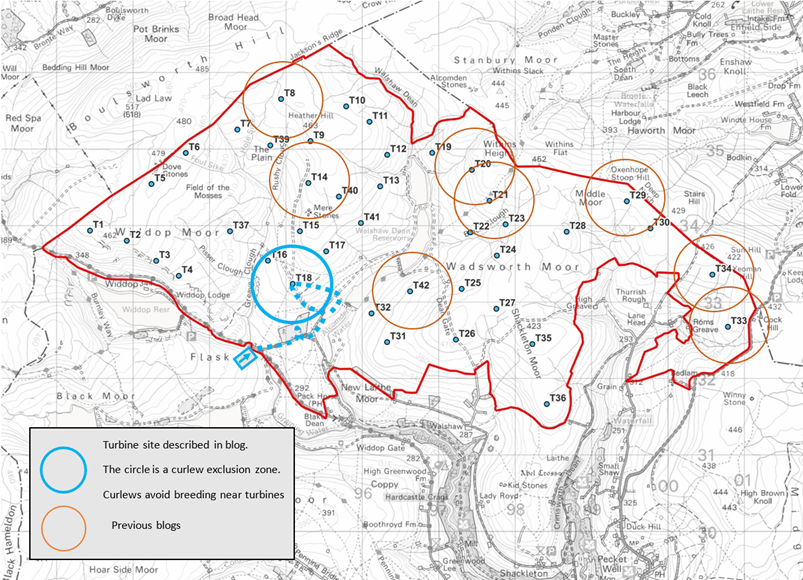
15 August 2025 Nick, Stella and I are out hunting the Battery Energy Storage System aka the BESS. To guide us, we have some hints from CEF consultant Donald Mackay, the completely blank map that Project Director Christian Egal whimsically delivered to everyone in BD22 and HX7, and a guidebook The Hunting of the Snark by Lewis Carroll.
‘Just the place for a BESS!’ the Egal swore,
As he landed his crew with care,
Supporting each one on the lapwingy moor
By a finger entwined in their hair.’

We need to do this because all wind farms should have a BESS to store unwanted electricity generated by the wind farm when the wind is high or local demand is low. A BESS can usually store 30-60 mins of generated energy and this allows the wind farm to be a firm supplier for the half-hour settlement periods of the electricity market. Because Walshaw Moor is many miles from the DNO connection in Rochdale (not the same as the National Grid), and even further from the yet-to-be-built ‘Narnia’ NG connection ‘near Leeds’, we think it’s unlikely that a BESS on Walshaw Moor would often recharge with spare electricity from the local or National Grid. This would involve a much larger BESS able to handle not only the free electricity generated on site, but also mopping up spare electricity. Nick says, ‘The 132 kV cable to Rochdale or Leeds will be too low voltage and too long to allow economic charging of a Walshaw Moor BESS from the grid, except in unusual circumstances. A grid-trading BESS goes right next to NG infrastructure at 400 kV. The Walshaw BESS is 20 miles in and 20 miles out along a 132 kV cable at nine-times the loss rate of a 400 kV cable. The land might be cheap, but the battery on a hectare costs £40 million, so if it’s Walshaw at £7000 per hectare or Harrogate at £700,000, the land value hardly makes a difference.’
That is certainly true at Pillswood BESS (98 MW, 196 MWh) in Cottingham, near Hull, built adjacent to Creyke Beck NG substation. The substation will receive the offshore power from Dogger Bank, projected to be the world’s largest offshore wind farm at 8.1 GW. Once superior offshore capacity factors and the realistic size of CEP are factored in, Dogger Bank will be 58 CEPs, all connected by 2030. A BESS can only cover day-scale variations in wind power. Prolonged windlessness in winter can only be covered by building electrolysers that liberate hydrogen from water that is stored and burned in a gas turbine.
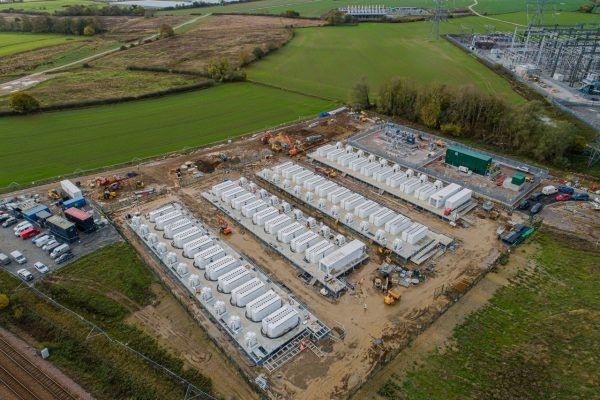
So, the ‘good news’ is that if we’re right about that, the BESS is likely to be not that big; the bad news from the wind farm owner’s point of view is that they would be unlikely to make much money buying energy from the National Grid at a low price and selling it back to them later at a higher one. However, curtailment is more likely if the BESS is smaller because it won’t be able to store so much electricity and the turbines are therefore more likely to be turned off in sustained high winds – for which the wind farm owner would be paid constraint payments, financed by us. So, it’s swings and roundabouts for them and therefore us whichever way you look. The easy profit on CEP is Richard Bannister’s. The hard costs in grid upgrades, electrolysers, constraint and guaranteed high prices for the electricity in contracts for difference, all fall on us.
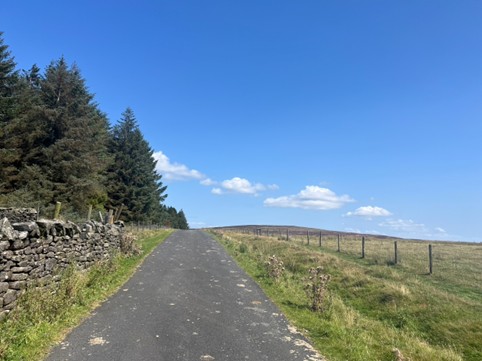
We park at Clough Foot on a very sunny and not too humid afternoon, and head up the Pennine Way, here briefly covered by tarmac as the access road to Walshaw Dean reservoirs. The earth is dust-dry, along with the vegetation, thanks to months of very little rain. Wildfires are a real and present danger with the land in this condition and would of course be a disaster on the mostly deep peat of Walshaw Moor. There have already been serious wildfires on Marsden Moor nearby, and Langdale Moor in North Yorkshire. More on this below, but first we have a BESS to catch.
He had brought a large map representing the site,
Without the least turbine or BESS
And the crew were so pleased when they found it was quite
A clear map they could quickly assess.
“Why should we be fussed with the dashed National Trust,
Brontë zones, and the watershed lines?”
So the Egal would cry: and the crew would reply,
“They are merely indicative signs!”
“We’ve all had enough of the sluice in Greave Clough
And we’ve got our brave Egal to thank,”
(So the crew would protest) “that he’s brought us the best—
A perfect and absolute blank!”
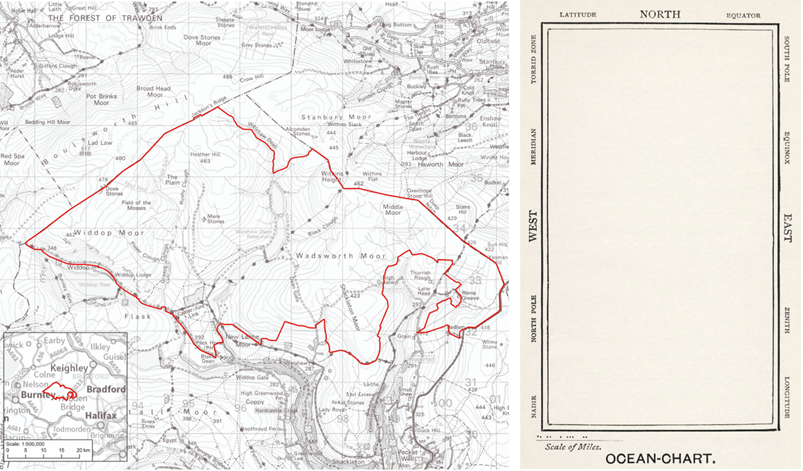
More than the fact that there will be a BESS at the site, we know very little. We don’t know where it will be, how large it will be, how it will be constructed, what safety measures will or won’t be in place. Let’s take these in turn.
Donald Mackay told us at the CEP webinar during the supposed public consultation that BESS are usually located close to the onsite substation. We don’t yet know where that is either, but he said that ideally it would be at the centre of the site, and lower down so less exposed, and a substation compound built there with a cable from there to the chosen offsite grid substation, up to twenty miles away. Without knowing the proposed turbine layout, it’s hard to know what Donald means by the ‘low down and central’. It would presumably need to be built on fairly flat ground, and we think the most likely areas are close to the tarmac track which comes up from Clough Foot on the Widdop Road to the reservoirs. There is a flat field to the right, and a mature forestry plantation to the left of the road. Neither area has much if any peat. In the CWF proposal, this area hosted three turbines, T49 in the plantation itself.
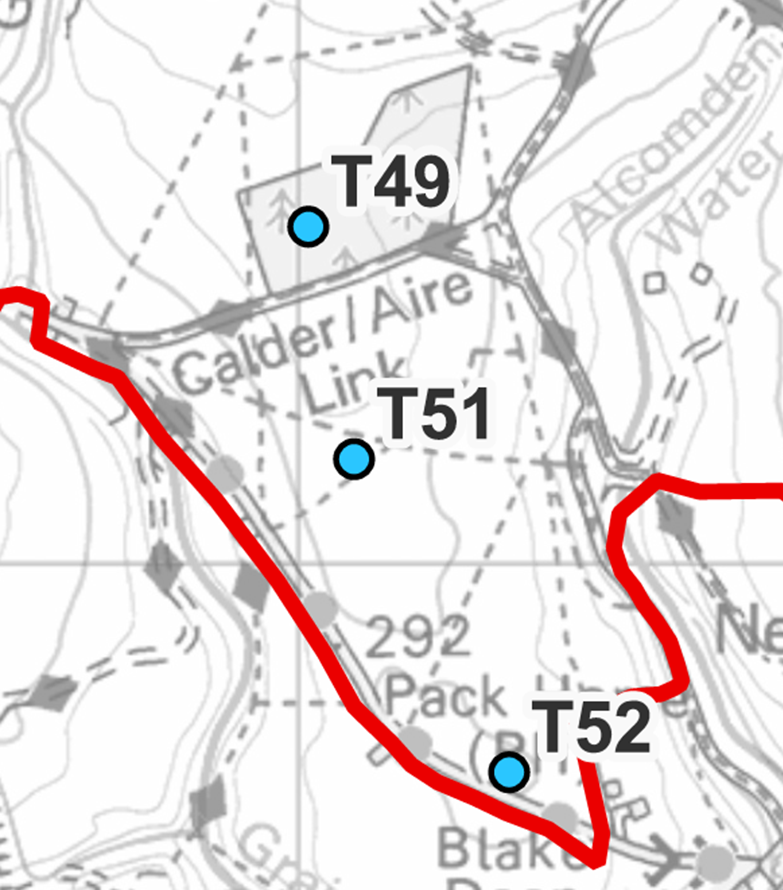
The field would be easier, but is extremely visible from a national trail and the National Trust, and is also a prime nesting ground for greylag geese, and more importantly, red listed lapwings and curlews.
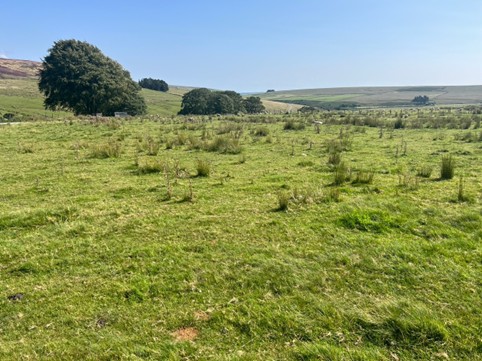
The interior of the plantation would need to be cleared of trees, but the remaining thin belt of trees would partially hide the BESS from view. Screening by trees is often a planning requirement for a rural BESS. Despite or perhaps because of being a defunct plantation, there is plenty of wildlife here. Crossbills and woodcock are regularly observed by local birders. The original CWF had a turbine site here, so the developers could not care less about the birds.
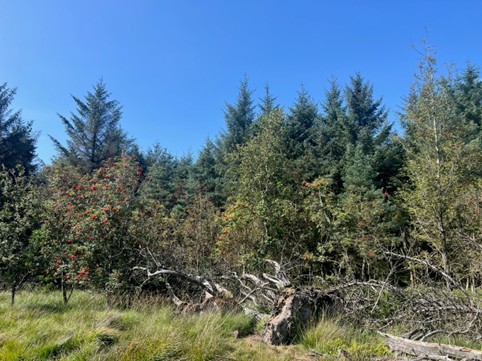
The plantation and the grazing in front of it is not part of the CroW access land, and the gates are covered in barbed wire. We found a bit of fence had been removed so we ducked inside. I spotted a lizard and several blue dragonflies. The trees are beyond mature. One creaked loudly in the light wind.
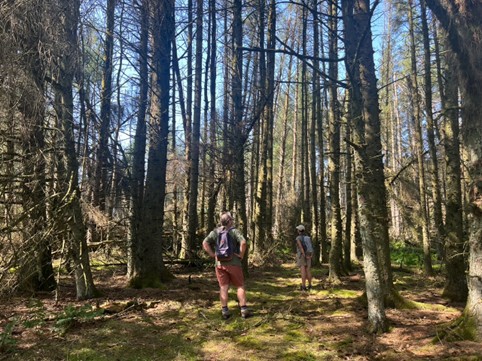
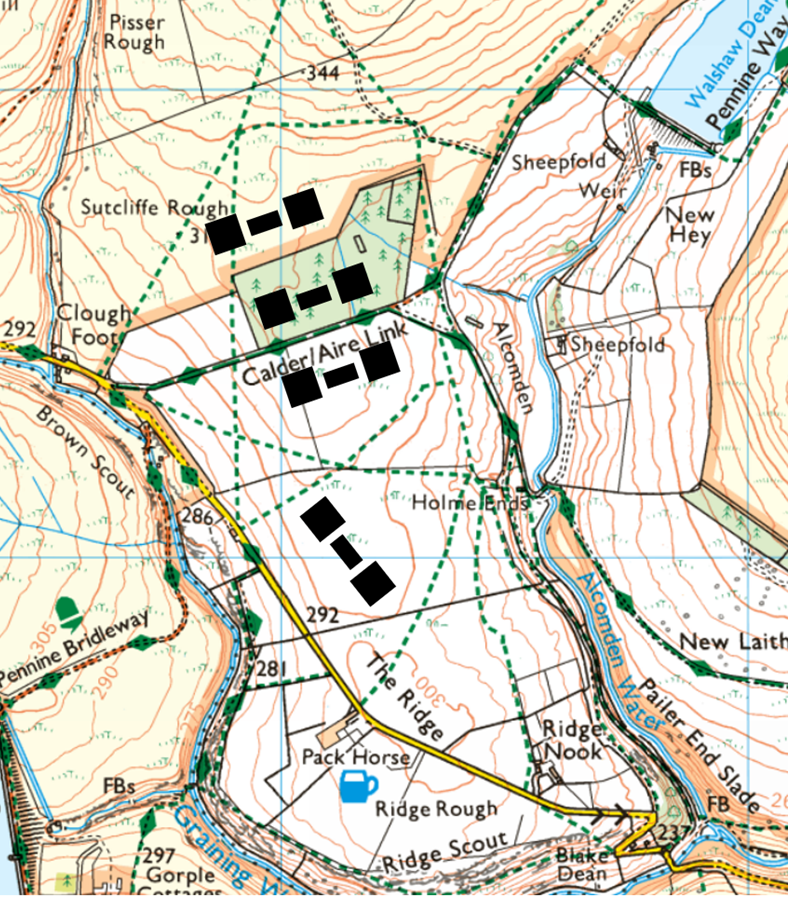
We emerged blinking from the tulgey wood and bumped into Deep Stoat, the campaign mole, pretending to photograph redpolls but also spying on us. Is he a double agent? Stella and I had not met this shadowy figure, and after brief introductions, he told us this:
“The thing you need to factor in is that Richard Bannister loves Walshaw Moor and adores his shoot. He’s in two minds about the wind farm. Obviously, he wins either way, because he’s already had about £4 million, but he probably doesn’t believe the wind farm can ever happen. Who knows better than Richard the legal obstacles? If someone offered you a million pounds per year for a project you don’t like but think can’t happen, what would you do?” I said, “But if it gets to Ed ‘Net-Zero-At-Any-Cost’ Miliband he’ll tick the box and Mr Bannister would have to sell.” “Predictions are hard, especially about the future. You tell me now: Will there be any shooting this season?” Nick said, “Huge year for curlews. Best year for grouse since 2020 when they were all over our house, but not that many.” “There you go” he said. “I’ve just photographed a mum and twelve youngsters toddling across the tarmac and I reckon there’ll be grouse galore.” (Deep Stoat was right. There has been plenty of shooting.). “Now, Richard isn’t on your Christmas card list, but he’s well-liked in Colne, his gamekeepers are totally loyal and his staff at Boundary Mill are fond of him. These are facts to weigh with others about flooding and this BESS you’re after.” Deep Stoat waved at the horizon, and we scanned the heather near and far. When our focus came back to the plantation, he had softly and suddenly vanished away.
To me this information makes it even more astonishing that Richard Bannister has not restored his moor instead of opening it up for development, thus earning him the enduring love of the local community and a plaque in the centre of Hebden Bridge for services to Flood Prevention and Biodiversity.
Back to BESS. We may have found some likely locations but there are still big questions to answer, the first of which is, how large will it be?
“Come, listen, my men, while I tell you again
Of the signs that allow you to guess
All the juggernaut powers and the megawatt hours
Of the mystery Calderdale BESS.”
Most wind farms pair with a BESS sized to about 50% of the installed power. We think that, if consented, CEP will have 170-230 MW of installed power which would be “indicative” (as the consultants say when they know but don’t want to tell you) of a 100-200 MWh or 50-100 MW BESS.
BESS systems are typically deployed in 40-foot container units (roughly 12 × 2.5 × 2.9 metres.) If we include space for inverters, transformers, and fire access, the total land coverage would be 5000 – 10000 m2 or 0.5 -1 hectare.
So far, so good, if decidedly ugly and industrial-looking. The Pennine Way walkers will be dismayed.
The most likely battery technology to be used on WM is lithium-ion batteries, the same as in your smartphone, only considerably larger. These are more efficient and more well-developed and researched compared with their alternatives, for now. They are also very expensive. The CEP BESS could cost somewhere between £20 million (110 MWh) and £40 million (200 MWh), ultimately paid for, of course, by us.
More BESS sites are being built in the UK all the time, and many more are seeking planning consent; BESS capacity is set to triple by 2030 regardless of the UK’s progression towards net zero goals. However, the government itself states that ‘one of the only necessities regarding location of the site is the ability of the facility to be connected to the grid’. BESS work best when they are right next to the grid. Unfortunately, Walshaw Moor is, as we know, many miles away from even a local grid connection – the longer the connecting cable, the more energy is wasted. And the connecting cable and infrastructure of course needs to be built, with all the local and environmental disruption that would entail.
The small amount of lithium mined or processed in the UK tends to be used in vehicle batteries or consumer goods. Lithium-ion batteries and supporting structures for the BESS which also require relatively rare minerals such as cobalt, nickel and gold, are imported. Mining lithium is dangerous and requires a huge amount of water to extract lithium from its ore. Effectively we are off-shoring the land degradation, water contamination and air pollution thereby created. However, these issues don’t disappear once BESS is in place.
Here is a quote from the government paper ‘Environmental and social implications of energy storage technologies’, p.128:
“[A BESS] will undoubtedly present a large mechanical strain on the underlying geology upon which it is situated. An impermeable surface would be a requirement not only to facilitate the operation of heavy machinery during construction, but also mitigate the risk of mechanical instability of the ground in the event of firefighting fluids or extreme weather conditions altering the permeability of the underlying geology.”
In the gritstone context, this would require at least a concrete pad. The tracks and turbine pads are permeable, but the BESS pad should not be.
One of the main concerns about any BESS is that it can overheat and catch fire. This is potentially even more dangerous when BESS units are stacked, as the fire can spread more easily between units. Chris Kemp, Senior Fire Protection Manager for West Yorkshire Fire Service (WYFS) has said that “The risks of vapour cloud, thermal runaway and explosion are unfortunately very real and are becoming more common as we see an increase in the number of BESS installations rise.” He said a lot more that is germane to CEP. WYFS is not a statutory consultee for CWF’s application, but it should be.
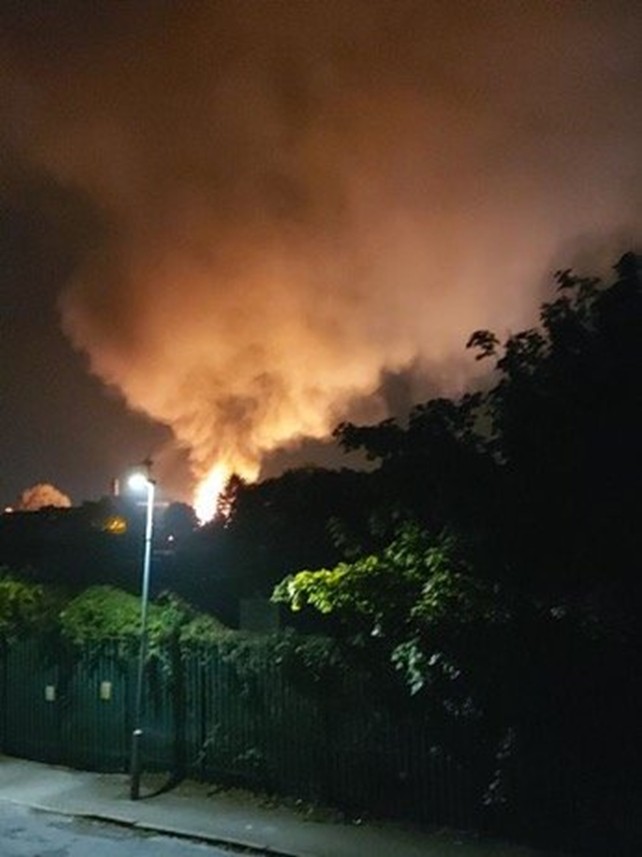
- There is no definitive method to extinguish lithium-ion BESS fires, which are chemical fires and will continue to burn under water. The most effective method is full submersion of each unit for 24+ hours. Contaminated runoff is a major issue, as is air pollution from vapour clouds.
- A fire at a 20 MWh BESS (a mere 4 shipping containers) in Liverpool in 2020 was caused by a thermal runaway event and an explosion in one container, damaging its neighbours and scattering debris over a range of up to 23 miles. The fire burned for 59 hours, releasing toxic clouds into the atmosphere over that period. We need to bear in mind the many towns which encircle Walshaw Moor within a few miles of the proposed BESS.
- Best practice is to build concrete bunding around each unit, or group of units, with the ability to help prevent fire spread, and fill and retain water, which once contaminated can be removed safely without poisoning local watercourses. This is especially important in such a remote, difficult to access, and environmentally sensitive location, although obviously adds both to the construction costs, and the footprint of each unit. Unfortunately, the government is behind the curve and is yet to pass legislation to enforce this.
- Siting a BESS in the middle of, or even near, a deep peat moorland could result in the burning of the whole of the moor – a BESS fire could become a wildfire. This would damage any nearby turbines as well as the peat. It is dangerous for firefighters to fight a BESS fire even assuming they had access to the required volumes of water. WYFS say 5,000 litres/minute for a 24-hour period, which is millions of litres; presumably this would be sourced via a permanent connection to the Walshaw Dean reservoir system. It isn’t possible for the fire service to access a 200-metre turbine with a hub height of 90-metres, so any turbines which caught fire would be left to burn. Many of the hub components are toxic and would contaminate the soil and water courses. Fluoroelastomers burn to hydrofluoric acid and hydrogen fluoride gas. An acidic slime is left, which if in contact with human/animal skin needs to be surgically removed – but additionally the whole site would need to be decontaminated using specialist teams and equipment, not to mention replacing damaged turbines, cables, and the BESS itself.
Even if we assume a best-case scenario and there is no fire at a Walshaw Moor BESS, it will need to be maintained to help prevent this from happening. Battery cells and their surrounding ventilation and air conditioning system need to be checked regularly (the Liverpool fire was caused by a faulty battery module). Lithium batteries have a lifespan of 5-15 years, so most of the batteries would need replacing at least once over the life of the wind farm, with all the transportation and construction issues involved. Transportation poses inherent risks of accidents, spills, or leaks during transit, potentially resulting in the release of hazardous materials, thereby posing risks to both the environment and human health. This applies both to the initial construction and removing redundant batteries away from the site.
Equally concerning is the possibility of terrorism attacks, especially in such an isolated location. How could the site be made secure?
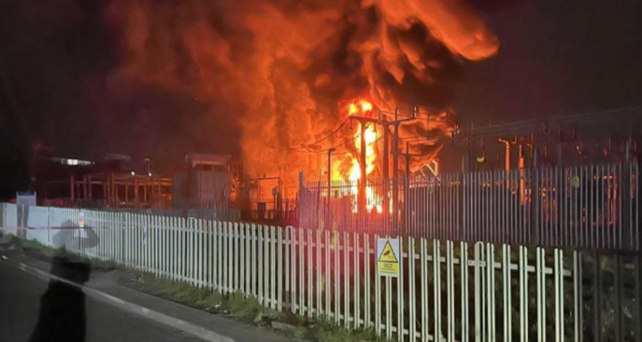
Finally, there is decommissioning. Batteries pose significant environmental and pollution threats as already mentioned. Best practice would be to recycle their components, reducing the need for new resource extraction and contributing to the circular economy.
So, we must hold the developers’ feet to the fire on multiple grounds:
- Providing a safe impermeable surface for the BESS installation
- Using non-stacked, bunded battery modules
- Ensuring that WYFS is a statutory consultee
- Ensuring ongoing maintenance
- Ensuring recycling of all battery components at end-of-life, both during operation of the wind farm and subsequent decommissioning
- Providing adequate security to the site (is this even possible?).
Who will have responsibility and oversight?
We still must walk to a turbine site, so we continue past the plantation and up the sidetrack beyond it to the left, past a sheep in a drainpipe.
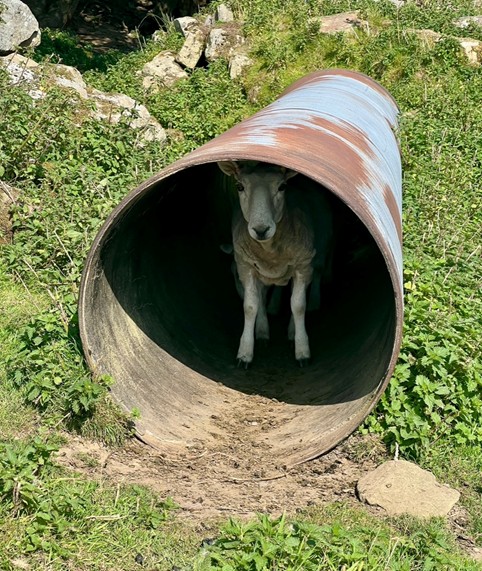
T18 is weirdly sited right on the track, which is a public right of way that continues down into Greave Clough, while an estate track finishes in Rushy Beds below Heather Hill.
There is a beautiful heather-filled view across to the other side of Greave Clough, with Dove Stones on the skyline. We wonder how much longer these tracks will lead to wild spaces.
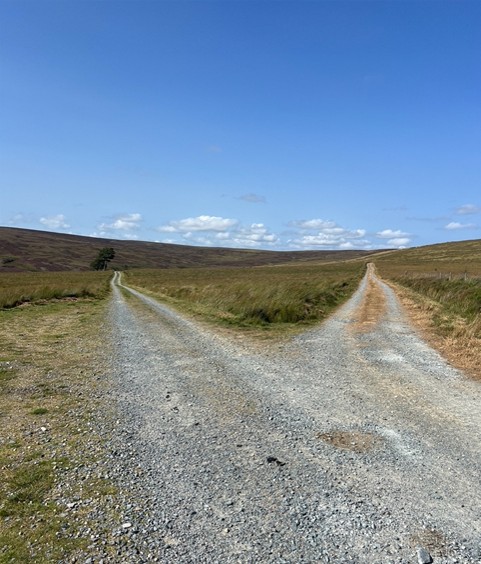
+++++++++++++++++++++++++++++++++++++++++++++
This is the 43rd in a series of guest blogs originally based on the 65 wind turbines which Richard Bannister planned to have erected on Walshaw Moor. Turbines 5, 6, 8, 8CEP, 9, 11, 13, 14CEP, 14, 16, 17, 20CEP, 21, 21CEP, 25, 25CEP, 27, 29CEP, 31, 32, 33, 33CEP, 34, 35, 36, 37, 38, 40, 42, 42CEP, 43, 44, 47, 53, 54, 56, 57, 58, 60, 62, 64 and 65 have already been described.
The developers have canned their original 65 wind turbines, quite possibly in response to the public humiliation of having their so-called ‘plan’ publicly shown to be damaging, irrational and probably unlawful. They have come back with a plan for 42 wind turbines and the amazing Nick MacKinnon and friends have regrouped and set off on a new tack too. The series continues.
To see all the blogs – click here.
[registration_form]



